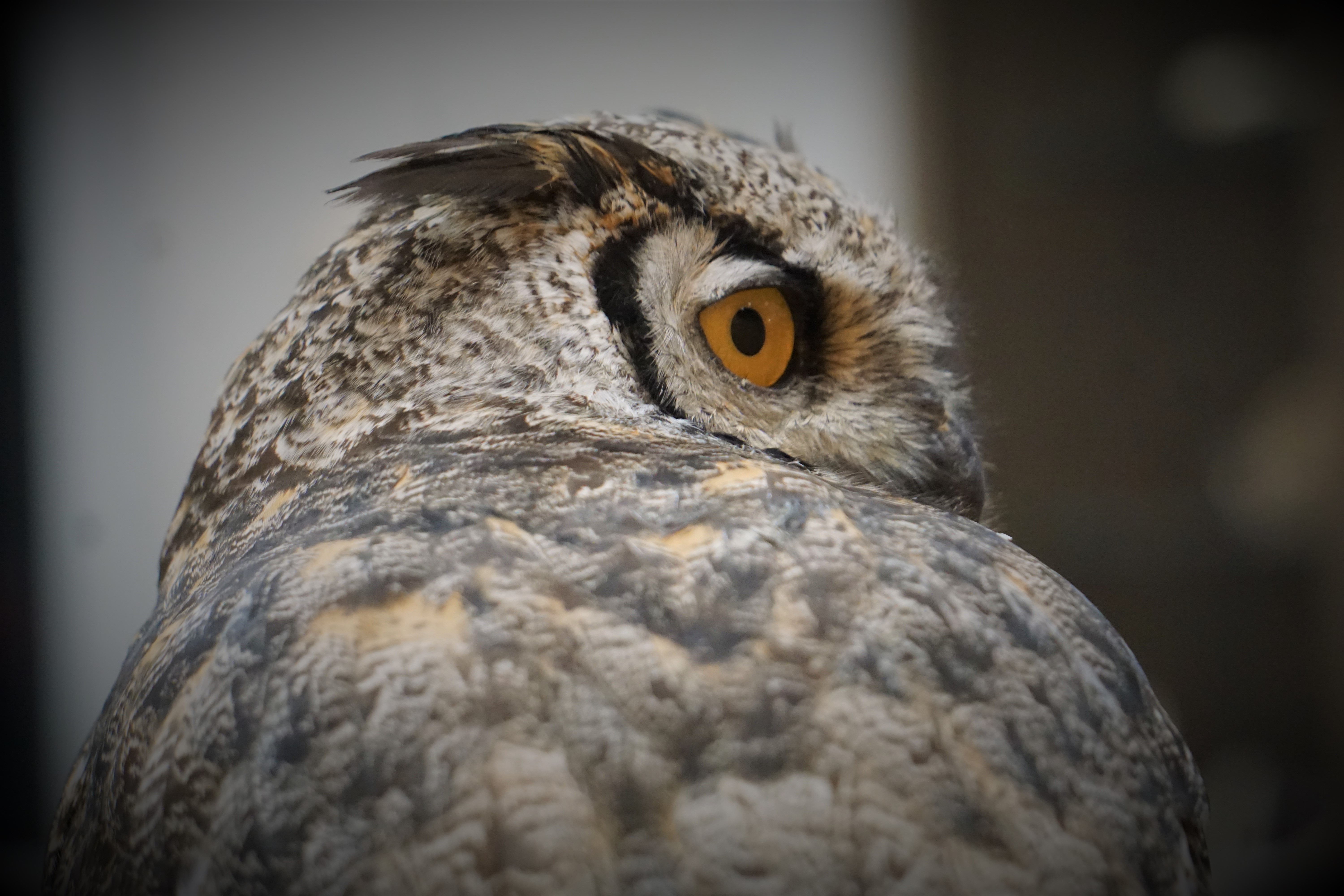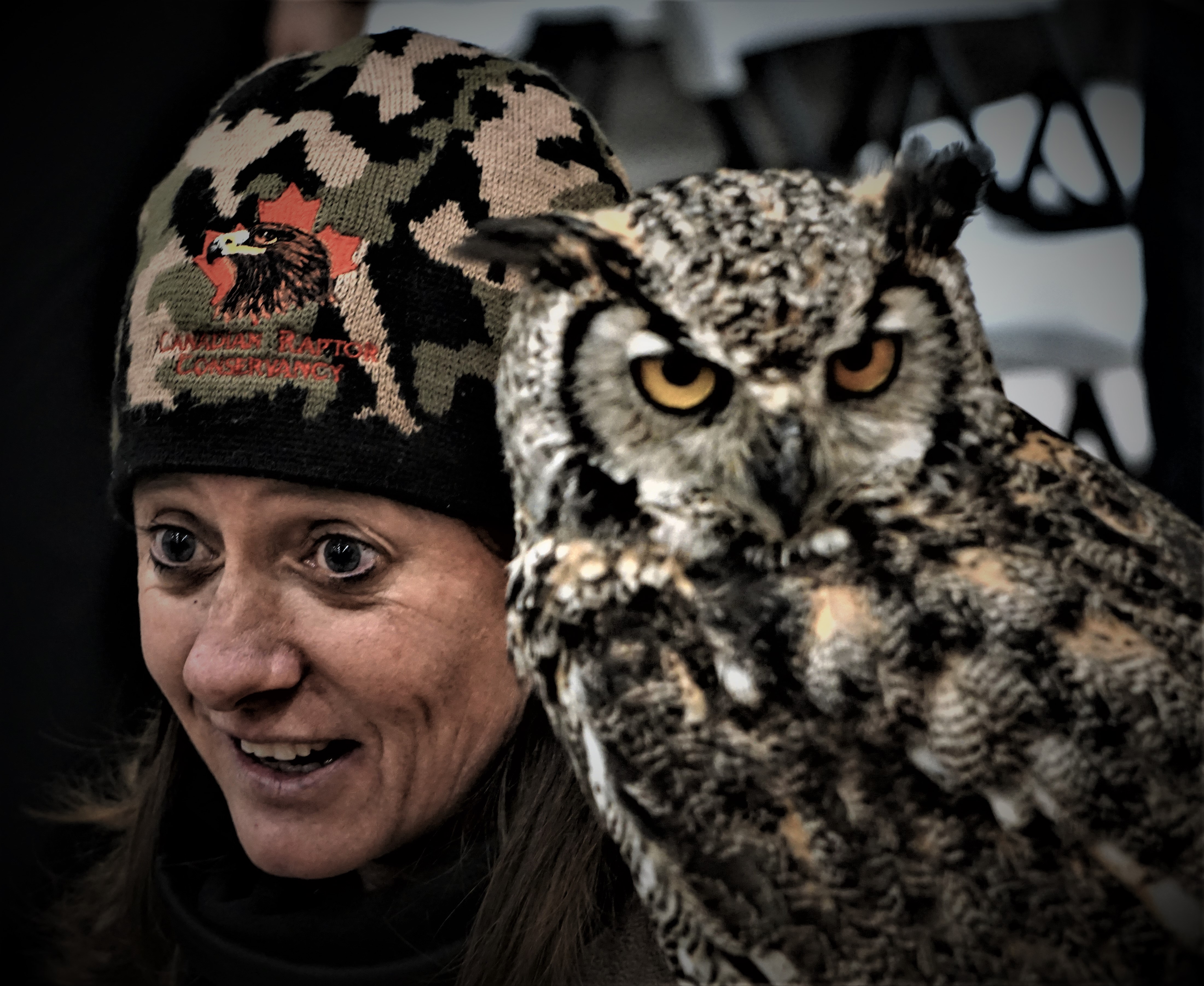Owl Howl
October 27, 2023 / 7:00 – 8:30 p.m. / $15 per person
Niagara Parks is once again teaming up with the Canadian Raptor Conservancy to bring you Owl Howl, an evening exploration of the beauty and mystery of owls. Come face-to-face with live owls and discover the unique predatory life of these magnificent nocturnal birds of prey.
Enjoy an ‘owl talk’ led by an expert and learn how owls’ evolutionary behaviour, vision and hearing helps them survive in complete darkness. The evening will conclude outdoors where you will have a chance to practice your best owl call. You might hear a response!
Your owl encounter awaits!
Tickets must be purchased online and will not be available at the door. Children five and under are free. Rain or shine event.
The Owl Howl for 2023 is now sold out.
Hunters by Nature
Vision
Owls have proportionately large eyes to accommodate the ocular structure necessary for nighttime vision. Although night hunting is typical of owls, they can also see well in daylight.
Silent Flight
Owls’ wings account for the largest surface area relative to the body structure of other bird species. The size of their wings allows them to fly slowly and silently using only shallow wing beats; the downy surface and soft fringed edges of their wings also reduce noise in flight. Their broad wings provide enough lift to carry prey with relative ease. These are helpful characteristics in approaching prey.
Sensitive Hearing
Owls rely heavily on hearing to precisely locate prey; their ears are so sensitive that environmental noise can cause them to stop hunting. A thunderstorm or a snowmobile, for example, can have this effect.
Locating Prey
The owl’s wide head positions the ears far apart, which helps it easily estimate the horizontal location of a sound surface–that is, from side to side just as we use our ears. To catch prey, however, the owl must simultaneously determine the horizontal location and distance to arrive at the precise location of prey animals within microseconds.
Food Supply and Survival
Availability of prey animals fluctuates in cycles of abundance and decline, especially in the Arctic. When prey is scarce, northern owls often move into southerly regions.

Things to Know About the Event
- Location: The Niagara Parks School of Horticulture, Lecture Hall
- Tickets: $15 per person, children five and under are free. Limited tickets available. Tickets must be purchased online and will not be available at the door.
- Parking: Included with the purchase of a ticket
- Rain or shine event
Canadian Raptor Conservancy
The Canadian Raptor Conservancy is one of the largest captive breeding projects in the world. With over 200 captive-bred birds at their facility, the Conservancy regularly breeds over 15 different species each year. Many are endangered species and some of their offspring are sent back into the wild through organized release projects around the world.
The facility also cares for sick and injured birds of prey from the wild, working very closely with veterinarians to assess injuries and try to return the birds back into the wild. The Canadian Raptor Conservancy takes in over 50 birds of prey each year into its rehabilitation program.



 Close and
Close and